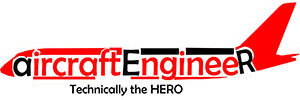5.1 Electronic Instrument Systems
Typical systems arrangements and cockpit layout of electronic instrument systems.
5.2 Numbering Systems
Numbering systems: binary, octal and hexadecimal;
Demonstration of conversions between the decimal and binary, octal and hexadecimal systems and vice versa.
5.3 Data Conversion
Analogue Data, Digital Data;
Operation and application of analogue to digital, and digital to analogue converters, inputs and outputs, limitations of various types.
5.4 Data Buses
Operation of data buses in aircraft systems, including knowledge of ARINC and other specifications.
5.5 Logic Circuits
(a)Identification of common logic gate symbols, tables and equivalent circuits;
Applications used for aircraft systems, schematic diagrams.
(b) Interpretation of logic diagrams.
5.6 Basic Computer Structure
(a)Computer terminology (including bit, byte, software, hardware, CPU, IC, and various memory device such as RAM, ROM, PROM);
Computer technology (as applied in aircraft systems).
(b)Computer related terminology;
Operation, layout and interface of the major components in a micro computer including their associated bus systems;
Information contained in single and multi address instruction words;
Memory associated terms;
Operation of typical memory devices;
Operation, advantages and disadvantages of the various data storage systems. (B2 only)
5.7 Microprocessors (B2 only)
Functions performed and overall operation of a microprocessor;
Basic operation of each of the following microprocessor elements: control and processing unit, clock, register, arithmetic logic unit
5.8 Integrated Circuits (B2 only)
Operation and use of encoders and decoders;
Function of encoder types;
Uses of medium, large and very large scale integration.
5.9 Multiplexing (B2 only)
Operation, application and identification in logic diagrams
of multiplexers and demultiplexes.
5.10 Fibre Optics
Advantages and disadvantages of fibre optic data transmission over electrical wire propagation;
Fibre optic data bus;
Fibre optic related terms;
Terminations;
Couplers, control terminals, remote terminals;
Application of fibre optics in aircraft systems.
5.11 Electronic Displays
Principles of operation of common types of displays used in modern aircraft, including Cathode Ray Tubes, Light Emitting Diodes and Liquid Crystal Display.
5.12 Electrostatic Sensitive Devices
Special handling of components sensitive to electrostatic discharges;
Awareness of risks and possible damage, component and personnel anti-static protection devices.
5.13 Software Management Control
Awareness of restrictions, airworthiness requirements and possible catastrophic effects of unapproved changes to
software programmes.
5.14 Electromagnetic Environment
Influence of the following phenomena on maintenance practices for electronic system:
EMC-Electromagnetic Compatibility
EMI-Electromagnetic Interference
HIRF-High Intensity Radiated Field
Lightning/lightning protection
5.15 Typical Electronic/Digital Aircraft Systems
General arrangement of typical electronic/digital aircraft systems and associated BITE (Built In Test Equipment) testing such as:
ACARS-ARINC Communication and Addressing and Reporting System
ECAM-Electronic Centralised Aircraft Monitoring
EFIS-Electronic Flight Instrument System
EICAS-Engine Indication and Crew Alerting System
FBW-Fly by Wire
FMS-Flight Management System
GPS-Global Positioning System
IRS-Inertial Reference System
TCAS-Traffic Alert Collision Avoidance System
